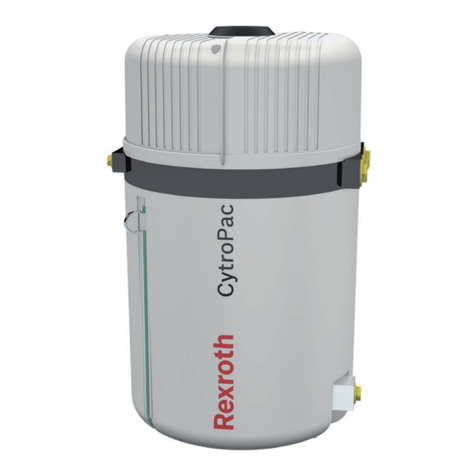Stanford Research Systems DC205 Operation manual

Operation and Service Manual
Precision DC Voltage Source
DC205
Stanford Research Systems
Revision 0.30 •February 22, 2019

Certification
Stanford Research Systems certifies that this product met its published specifications at the time
of shipment.
Warranty
This Stanford Research Systems product is warranted against defects in materials and workman-
ship for a period of one (1) year from the date of shipment.
Service
For warranty service or repair, this product must be returned to a Stanford Research Systems
authorized service facility. Contact Stanford Research Systems or an authorized representative
before returning this product for repair.
Information in this document is subject to change without notice.
Copyright c
Stanford Research Systems, Inc., 2019. All rights reserved.
Stanford Research Systems, Inc.
1290–D Reamwood Avenue
Sunnyvale, CA 94089 USA
Phone: (408) 744-9040 •Fax: (408) 744-9049
Printed in U.S.A. Document number 9-01745-903
DC205 Precision DC Voltage Source

Contents
General Information iii
Safety and Preparation for Use ................ iii
Symbols ............................. iv
Notation ............................. v
Specifications .......................... vi
1 Getting Started 1 – 1
1.1 How to use this manual ................. 1–2
1.2 Preliminaries ........................ 1–2
1.2.1 Equipment needed ................ 1–2
1.3 First example: turning on the instrument ....... 1–2
1.4 User interface ....................... 1–4
1.5 Instrument settings .................... 1–5
1.5.1 Sense ........................ 1–5
1.5.2 Isolation ...................... 1–6
1.5.3 Scanning ...................... 1–7
1.6 Interlock .......................... 1–10
2 Operation 2 – 1
2.1 Navigating the front panel ................ 2–2
2.1.1 Power ....................... 2–2
2.1.2 Range ....................... 2–4
2.1.3 Select /Adjust ................... 2–4
2.1.4 Numeric Entry .................. 2–5
2.1.5 Sense ........................ 2–6
2.1.6 Config ....................... 2–6
2.1.7 Scan ........................ 2–7
2.1.8 Output ....................... 2–7
2.1.9 Status ........................ 2–8
2.1.10 Source Out ..................... 2–8
2.2 Theory of operation .................... 2–10
2.3 Scanning .......................... 2–10
2.4 Error messages ...................... 2–10
3 Remote Operation 3 – 1
3.1 Index of commands .................... 3–2
3.2 Alphabetic list of commands ............... 3–4
i

ii Contents
3.3 Introduction ........................ 3–6
3.3.1 Interface configuration .............. 3–6
3.3.2 Buffers ....................... 3–6
3.4 Commands ......................... 3–7
3.4.1 Command syntax ................. 3–7
3.4.2 Notation ...................... 3–8
3.4.3 Examples ..................... 3–8
3.4.4 Configuration commands ............ 3–9
3.4.5 Setting commands ................ 3–10
3.4.6 Scan commands .................. 3–10
3.4.7 Setup commands ................. 3–13
3.4.8 Interface commands ............... 3–13
3.4.9 Status commands ................. 3–15
3.5 Status model ........................ 3–18
3.5.1 Status byte (SB) .................. 3–18
3.5.2 Service request enable (SRE) .......... 3–19
3.5.3 Standard event status (ESR) ........... 3–19
4 Field Calibration 4 – 1
4.1 Introduction to Field Calibration ............ 4–2
4.2 Equipment needed .................... 4–2
4.3 Detailed procedure .................... 4–2
A Fuse and ac Line A – 1
A.1 Power Entry module ................... A–1
A.2 ac voltage selector ..................... A–1
A.3 Fuse installation ...................... A–3
DC205 Precision DC Voltage Source

General Information
Safety and Preparation for Use
Dangerous voltages, capable of causing injury or death, are
WARNING present in this instrument. Do not remove the product covers
or panels. Do not apply power or operate the product without
all covers and panels in place.
AC line voltage
The DC205 Precision DC Voltage Source operates from a 100 V, 120 V,
220 V–230 V, or 240 V nominal ac power source having a line fre-
quency of 50 Hz or 60 Hz. Before connecting the power cord to a
power source, verify that the LINE VOLTAGE SELECTOR, located
in the rear panel power-entry module, is set so that the correct ac line
voltage value is visible. For operation with 230 V ac power, the LINE
VOLTAGE SELECTOR should be set to 220 V.
The DC205 Precision DC Voltage Source will be damaged if oper-
CAUTION ated with the LINE VOLTAGE SELECTOR set for the wrong ac line
voltage, or if the wrong fuses are installed. Verify that the correct
line fuses are installed before connecting the line cord. Use two (2)
metric size 5 ×20 mm fuses. For 100 V/120 V, use 1 A fuses; for 220 V–
230 V/240 V, use 0.5 A fuses. See appendix A for detailed instructions.
Line cord
The DC205 Precision DC Voltage Source has a detachable, three-wire
power cord for connection to the power source and to a protective
ground. The chassis of the instrument is connected to the outlet
ground to protect against electrical shock. Always use an outlet
which has a properly connected protective ground.
Service
The DC205 Precision DC Voltage Source does not have any user
serviceable parts inside. Refer service to a qualified technician.
Do not install substitute parts or perform any unauthorized modi-
fications to this instrument. Contact the factory for instructions on
how to return the instrument for authorized service and adjustment.
iii

iv General Information
Symbols you may Find on SRS Products
Symbol Description
Alternating current
Caution - risk of electric shock
Frame or chassis terminal
Caution - refer to accompanying documents
Earth (ground) terminal
Battery
Fuse
On (supply)
Off (supply)
DC205 Precision DC Voltage Source

General Information v
Notation
The following notation will be used throughout this manual.
A warning means that injury or death is possible if the instructions
WARNING are not obeyed.
A caution means that damage to the instrument or other equipment
CAUTION is possible.
Typesetting conventions used in this manual are:
•Front-panel buttons are set as [Button]
•Front-panel knobs are set as
Knob
•Front-panel indicators are set as Overload
•Remote command names are set as *IDN?
•Literal text other than command names is set as OFF
Remote command examples will all be set in monospaced font. In
these examples, data sent by the host computer to the DC205 are set
as straight teletype font, while responses received by the host
computer from the DC205 are set as slanted teletype font.
DC205 Precision DC Voltage Source

vi General Information
Specifications
All performance specifications after 2 hour warm-up at 23 ◦C±1◦C
ambient, unless otherwise specified.
Output
Range Full Resolution Max Time Settling
scale (1 ppm) current const.†time ‡
VμV mA μs ms
1V ±1.010 000 1 50 160 50
10 V ±10.100 00 10 50 160 50
100 V ±101.000 0 100 25 400 100
†Time required to settle to 63 % of final value
‡Time to settle to 99.999 % of final value
Settling times measured for full-scale step into 10 MΩload.
Accuracy and stability
Range Accuracy Stability
(23 ◦C±5◦C) (±1◦C)
24 h 90 day∗1 year∗24 h
±( ppm setting +μV)
1V 7+2 12 +6 25 +10 1 +1
10 V 7+6 12 +15 25 +20 1 +3
100 V 8+60 12 +80 25 +100 1 +20
∗preliminary
Noise and drift
Range Temperature Noise
coefficient (typical)
0◦C–40◦C (0.1 – 10) Hz 10 Hz – 100 kHz
±( ppm setting +μV)/◦CμVrms
1V 1+1 0.5 9
10 V 1+2 1.5 12
100 V 1+15 12 50
DC205 Precision DC Voltage Source

General Information vii
Remote Interfaces
RS-232 DB-9 connector, 9600 baud
USB USB type B receptacle; serial port emulation, 115,200 baud
Optical fiber Connection to SX199 Optical Interface Controller. Provides
isolated connectivity to GPIB, RS-232, and Ethernet.
General
Parameter Specification
Temperature 0 ◦Cto40◦C, non-condensing
Power <20 W, 100/120/220/240 VAC, 50/60 Hz
Dimensions 8.3 W×3.5 H×13 D
Weight 10 lbs
Fuse two (2) metric size 5 ×20 mm
DC205 Precision DC Voltage Source

viii General Information
DC205 Precision DC Voltage Source

1 Getting Started
This chapter provides step-by-step instruction to get started quickly
with the DC205 Precision DC Voltage Source. Refer to chapter 2 for
a more complete introduction to the DC205.
In This Chapter
1.1 How to use this manual ................. 1–2
1.2 Preliminaries ....................... 1–2
1.2.1 Equipment needed ................ 1–2
1.3 First example: turning on the instrument ....... 1–2
1.4 User interface ....................... 1–4
1.5 Instrument settings .................... 1–5
1.5.1 Sense ........................ 1–5
1.5.2 Isolation ...................... 1–6
1.5.3 Scanning ...................... 1–7
1.6 Interlock .......................... 1–10
1–1

1–2 Getting Started
1.1 How to use this manual
Two possible starting points are available to new users of the DC205.
Those who want to begin with an overview to the functional layout
of the instrument should turn to Chapter 2.
Users who prefer to jump in and begin using the DC205 first should
continue with this Chapter, where a series of step-by-step procedures
are given to verify the basic performance of the instrument. This will
also provide a quick introduction to the DC205 and how it is operated.
Chapter 3 discusses remote operation of the DC205 over any of the
three remote interfaces: USB, RS-232, and optical fiber.
1.2 Preliminaries
The following sections provide step-by-step instructions for verify-
ing the basic operation of the DC205. In addition to confirming
proper operation, it provides a good introduction to operating the
current source.
1.2.1 Equipment needed
To perform all the steps described in this chapter, you will need:
1. a collection of stacking banana plug test leads,
2. a precision voltmeter with at least 6 digits resolution,
3. a BNC 50 Ωterminator,
4. a dual banana-to-BNC (banana-male, BNC-female) adapter.
1.3 First example: turning on the instrument
This section describes the initial steps for first operating the DC205.
Please pay specific attention to the AC line voltage selector setting.
1. Before using the instrument, verify the rear-panel power entry
module is properly configured for the power line voltage in
your region. Applying power with improper setting of the
CAUTION line voltage selector will result in significant damage to the
DC205.
2. Plug the AC line cord into the rear-panel power entry module,
and then into a grounded wall outlet.
3. Using banana-plug test leads, connect the DC205 OUTPUT
terminals (HI and LO) to the voltmeter input terminals (HI and
LO). Turn on the voltmeter and set it to DCV, Autorange.
DC205 Precision DC Voltage Source

1.3 First example: turning on the instrument 1–3
4. Restore the factory default settings by pressing the POWER [ ]
while holding the BACKSPACE [ ] button depressed. This
will perform the power-on reset, clear any field calibration
data, and return the instrument to its factory default state.
After several seconds, the display will show ,
and then .
5. Key in the value 1.000000 V. Start by pressing the [1] and no-
tice the display shows the polarity indicator +and digit 1are
shown. Also, the Pending indicator begins blinking, indicating
the numeric value is awaiting entry.
6. Try pressing another digit, such as [3]. Note the value is not
added to the display, as the implied value (13) is out of range
for the current setting. Then press the decimal point button,
[.], and then press [0] three times. The display should show
and Pending should still be flashing.
7. Now press the [7] digit. The display will show
. We don’t actually want that last digit, so
now press the [ ] button to erase the .
8. Press the [Enter/Start]. The Pending indicator should go dark,
and the display now shows . The multi-
meter should not yet show any steady reading.
9. Finally, press the OUTPUT [On/Off] button. The On indica-
tor should illuminate, and the multimeter should now show a
reading very close to +1.00000 V.
10. Allow the unit to warm up for 2 hour for full specified perfor-
mance. Warm up is not needed to test basic functionality.
DC205 Precision DC Voltage Source

1–4 Getting Started
1.4 User interface
This section explores the DC205 front-panel interface, and demon-
strates the different methods for entering or modifying the voltage
setting.
1. If the OUTPUT is still On, turn it offby pressing the [On/Off]
button.
2. Change the RANGE to ±10 V by pressing [Range] once. Set
the voltage to 0 by pressing [0] and then [Enter/Start]. Enable
the output by pressing OUTPUT [On/Off]. The display should
show .
3. Press the
knob inwards. The least significant digit should
begin to blink. Now slowly turn the
knob clockwise. The
DC205 should click, and the least significant digit (tens of mi-
crovolts) begin incrementing. Continue turning the knob until
the display shows
4. Press the SELECT/ADJUST [] button two times. Notice that
with each press, the blinking digit moves one position to the
left. Now slowly turn the
knob for 3 more clicks clockwise.
The display should now show , and the
multimeter should show the same voltage.
5. Now clear the output setting by pressing [0] and [Enter/Start].
The display returns to , but notice the mil-
livolts digit is still blinking. Now press the [] button three
times. The display should now show .
Turn the
knob counterclockwise for 5 clicks. The display
should now show . and the (millivolts
position) is still blinking.
6. Press the [Cancel] button—now the blinking should stop. Care-
fully turn the
knob clockwise without depressing the shaft.
Note that there no clicks, and the setting does not change.
This brief exercise demonstrated the entry modes for the DC205, in-
cluding the notion of active editing (indicated by the blinking digit),
and the use of the [Cancel] button to return to the display-idle state.
Note that the [] and [] buttons provide essentially the same func-
tionality as the
knob .
DC205 Precision DC Voltage Source

1.5 Instrument settings 1–5
1.5 Instrument settings
This section will demonstrate the basic configurations of the DC205.
1.5.1 Sense
The SENSE setting selects 2-wire or 4-wire (remote sensing) for the
voltage source circuitry.
1. If the OUTPUT On indicator is lit, disable the DC205 OUTPUT
by pressing the [On/Off] button.
2. Connect a pair of banana test leads from the red and black
SENSE terminals on the DC205 to the input HI, LOW terminals
on the multimeter.
3. Connect a second pair of banana test leads from the red and
black OUTPUT terminals on the DC205, connecting the other
end of these test leads to the back of the corresponding stack-
able sockets on the banana leads at the multimeter. Be sure to
connect HI to HI, and LOW to LOW.
4. Plug the banana-to-BNC adapter into the back banana leads at
the multimeter. Be sure to align the Ground tab of the adapter
with the LOW side banana leads.
5. If not already so configured, press the [Range] button repeat-
edly until the ±1V range is selected. Press [Float/Ground] to
select Ground, and press [2 or 4 Wire] to select 2-wire.
6. Press [1] and [Enter/Start] to program the setting to 1.000 000 V.
Press [On/Off] to enable the output. Verify the multimeter
displays a voltage very close to 1.000 000 V.
7. Use the SELECT/ADJUST buttons or the
knob to adjust the
DC205 until the multimeter displays exactly 1.000 000 V, with a
minimum of 100 μV resolution.
8. Attach the 50 ΩBNC terminator to the banana-to-BNC adaptor.
Verify that the multimeter display drops by at least one or two
millivolts (the actual drop will depend on the length and wire
gauge of your banana test leads).
9. Now, press the [2 or 4 Wire] button. Verify that the 4-Wire
indicator and the SENSE indicator both become illuminated.
10. The multimeter should again be displaying exactly 1.000 000 V,
with a minimum of 100 μV resolution.
DC205 Precision DC Voltage Source

1–6 Getting Started
This exercise demonstrated the function of remote sensing in the
DC205. When operated in simple 2-wire mode, the commanded
output voltage is controlled internally. When a significant load is
presented (in this case, 50 Ω), a current flows from the voltage source
through the circuit created by the output leads. In this case, with
1 V across 50 Ω, a total of 20 mA flows through the output relays and
the banana test leads. Even 10 mΩof lead resistance in this case will
lead to a 200 μV potential drop.
By enabling remote sensing in the 4-Wire mode, the DC205 controls
the potential as measured by the sense leads. By carefully arranging
the SENSE wiring to not carry any of the load current, the desired
output voltage is applied at the point of interest (in this case, at the
multimeter input terminals).
1.5.2 Isolation
The CONFIG setting selects whether the output circuitry of the
DC205 is referenced to chassis ground or floating.
1. If the OUTPUT On indicator is lit, disable it by pressing the
[On/Off] button.
2. Connect a pair of banana test leads from the red and black OUT-
PUT terminals on the DC205 to the input HI, LOW terminals
on the multimeter.
3. Press the [Range] button to select ±1V. Press the [Float/Ground]
button to select Floating. Press [1] and then [Enter/Start] to set
the display to .
4. Press the [On/Off] button to enable the output. Verify that
+1.0000 V appears on the multimeter.
5. Connect another banana test lead to the green chassis ground
terminal on the DC205 front panel. Connect the second end of
DC205 Precision DC Voltage Source

1.5 Instrument settings 1–7
the test lead to the back of the red HI banana lead at the DC205.
Notice that the multimeter still displays +1.0000 V, even though
the HI terminal is now connected to chassis ground. The out-
put of the DC205 is configured to float; by grounding the HI
terminal with the banana lead, the LOW terminal is now at
−1.0000 V with respect to ground.
6. Now press the [Float/Ground] button to select Ground.
Now notice that the multimeter display had dropped to a value
near 0 V (probably a few millivolts). Also, the red Overload
indicator on the DC205 is illuminated. With the DC205 in
Ground mode, the LOW terminal is internally tied to ground.
By grounding the HI terminal to with the third banana lead, we
are shorting the output. This causes the Overload to illuminate.
7. Carefully remove the third banana lead from the back of the
banana cable at the HI terminal. The Overload indicator should
turn off, and the multimeter again should display very close to
1.0000 V.
1.5.3 Scanning
In addition to generating a stable DC voltage, the DC205 is also able
to create linear sweeps of the output voltage. This example will
demonstrate one such sweep.
1. If the OUTPUT On indicator is lit, disable it by pressing the
[On/Off] button.
2. Connect a pair of banana test leads from the red and black OUT-
PUT terminals on the DC205 to the input HI, LOW terminals
on the multimeter.
3. Press the [Range] button to select ±1V. Press the [Float/Ground]
button to select Ground. Press the [2 or 4 Wire] button to select
2-wire.
4. Briefly press the [Setup Arm] button, entering the SCAN setup
mode. The display should now show . Press [],
changing the display to . Press [] to return the
scan range selection to . Press [] once.
5. The display now shows the beginning voltage for the scan,
indicated with the at the left side of the display. Key in
the value [0], [.], [1], and then press [Enter/Start]. The display
should show . Press [] again.
DC205 Precision DC Voltage Source

1–8 Getting Started
6. The display now shows the ending voltage for the scan, indi-
cated with the at the left side of the display. Key in the value
[0], [.], [8], and press [Enter/Start]. The display should now
show . Press [] again.
7. The display now shows the time duration for the scan, indi-
cated by the at the left side of the display. Key in the value
[1] [0] and press [Enter/Start], to set the scan to 10 seconds. The
display should now show . Press [] again.
8. The display now shows the scan shape setting, indicated
by the at the left side of the display. The two
choices are (a unidirectional ramp), and
(a bidirectional ramp). Press [] and
[] to switch between these options. Leave the setting
at , and then press [] again.
9. The display now shows the scan repeat mode, indicated by
the at the left side of the display. The two choices
are (a single scan) and
(repeating until cancelled). Press [] and [] to switch between
these options. Leave the setting at , and
then press [] again.
10. The display now shows the scan display mode, indicated by
the at the left side of the display. The two choices are
(display is updated in near realtime during
the scan) and (display is left static during the
scan). Press [] and [] to switch between these options. Leave
the setting at , and then press [] again.
11. The display will be back to the setting. Press the []
to navigate backwards, to the setting. You can
navigate forward and backward through the scan parameters
with the [] and [] select buttons. Note, however, that if the
scan range is modified, then both the beginning and ending
scan voltages are reset to zero.
Press [Cancel] to exit SCAN setup mode. Set the output volt-
age to 0.5 V by pressing [0], [.], [5], [Enter/Start]. Then turn
the output On by pressing [On/Off]. The multimeter should
display a value close to 0.5000 V.
12. Now press and hold the [Setup Arm] button for at least 3 sec-
DC205 Precision DC Voltage Source

1.5 Instrument settings 1–9
onds. The display will briefly show , and
then show , which is the starting voltage
for the scan. Also, the Armed indicator comes on to show
that the scan is armed and ready, and the Pending indicator is
steadily illuminated. Press the [Enter/Start] button to start the
scan.
13. While the scan is running, notice that the multimeter and the
DC205 display are both smoothly sweeping from 0.1 V to 0.8 V.
After 10 seconds, the scan should end and the output voltage
settles at 0.8 V.
DC205 Precision DC Voltage Source

1–10 Getting Started
1.6 Interlock
The DC205 is designed with a safety interlock circuit that must
be definitively activated for the ±100 V output range to be en-
abled. The interlock is intended to support safe operation of
WARNING this instrument in a test system. Bypassing the interlock can
lead to a hazardous condition, possibly exposing the operator
to dangerous electrical potentials up to ±100 V, capable of caus-
ing injury or death.
Figure 1.1: The DC205 rear panel, shown with an interlock defeat plug.
For safety, the ±100 V range can only be enabled when the interlock
signal is asserted. To assert the interlock, a low impedance circuit
must be closed between pins 1 and 2 of the rear-panel INTERLOCK
socket. A mating plug is provided with the DC205.
When the interlock is asserted, the front panel Interlock indicator will
be illuminated. The interlock must be asserted to enable OUTPUT
On when the RANGE is ±100 V.
Note that the ±1V and ±10 V range settings can be enabled inde-
pendent of the whether the interlock is asserted.
DC205 Precision DC Voltage Source
Table of contents
Popular Portable Generator manuals by other brands

MAGMATIC
MAGMATIC THERMA TOUR 800 user manual

Scheppach
Scheppach SG4500 operating instructions

Desa
Desa MASTER BLP 15 kW M Operation and maintenance manual

Bavaria
Bavaria BPG 2500 Original operating instructions

Firman
Firman WH03242 Operator's manual

Generac Power Systems
Generac Power Systems 7500 owner's manual











